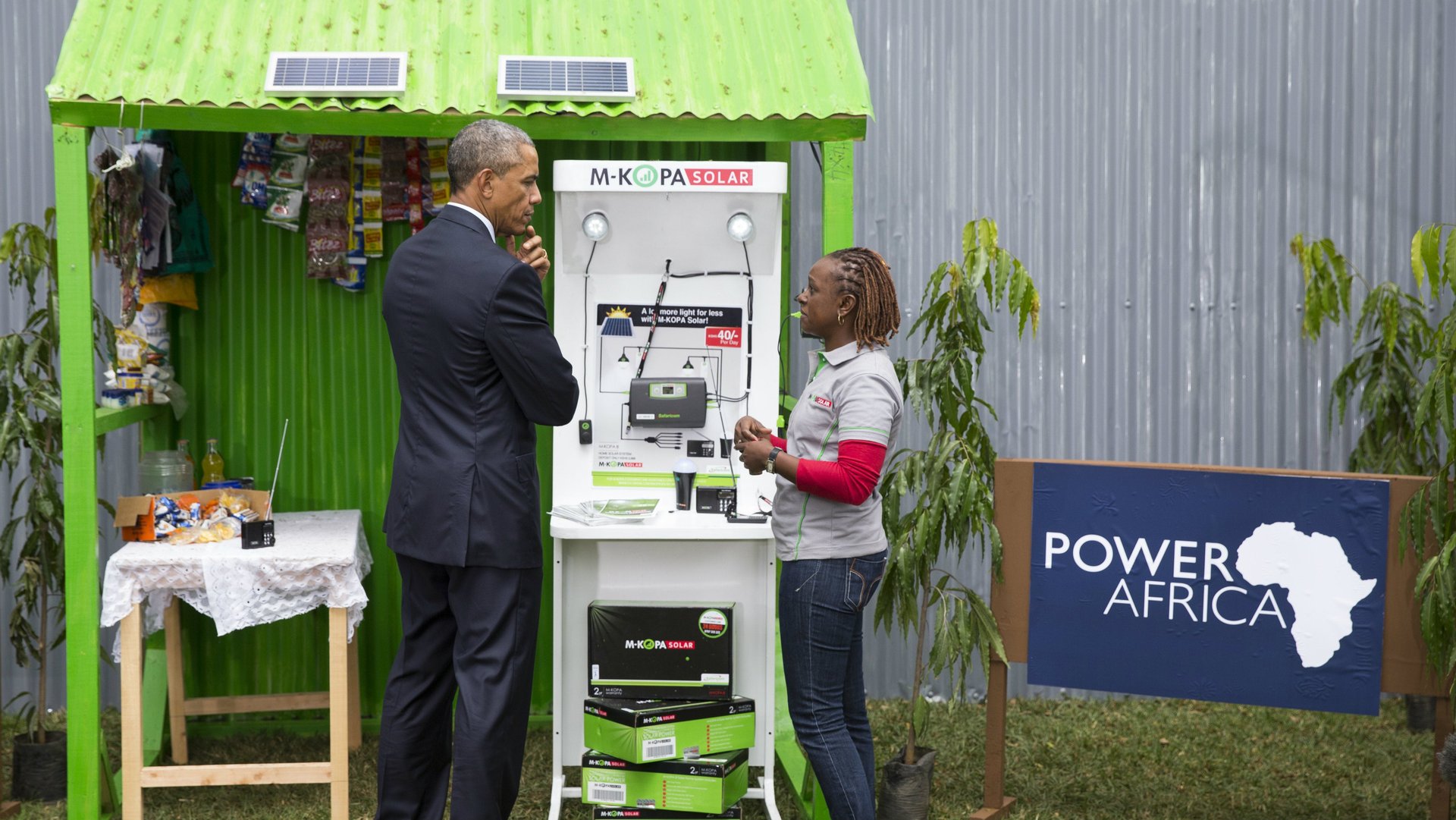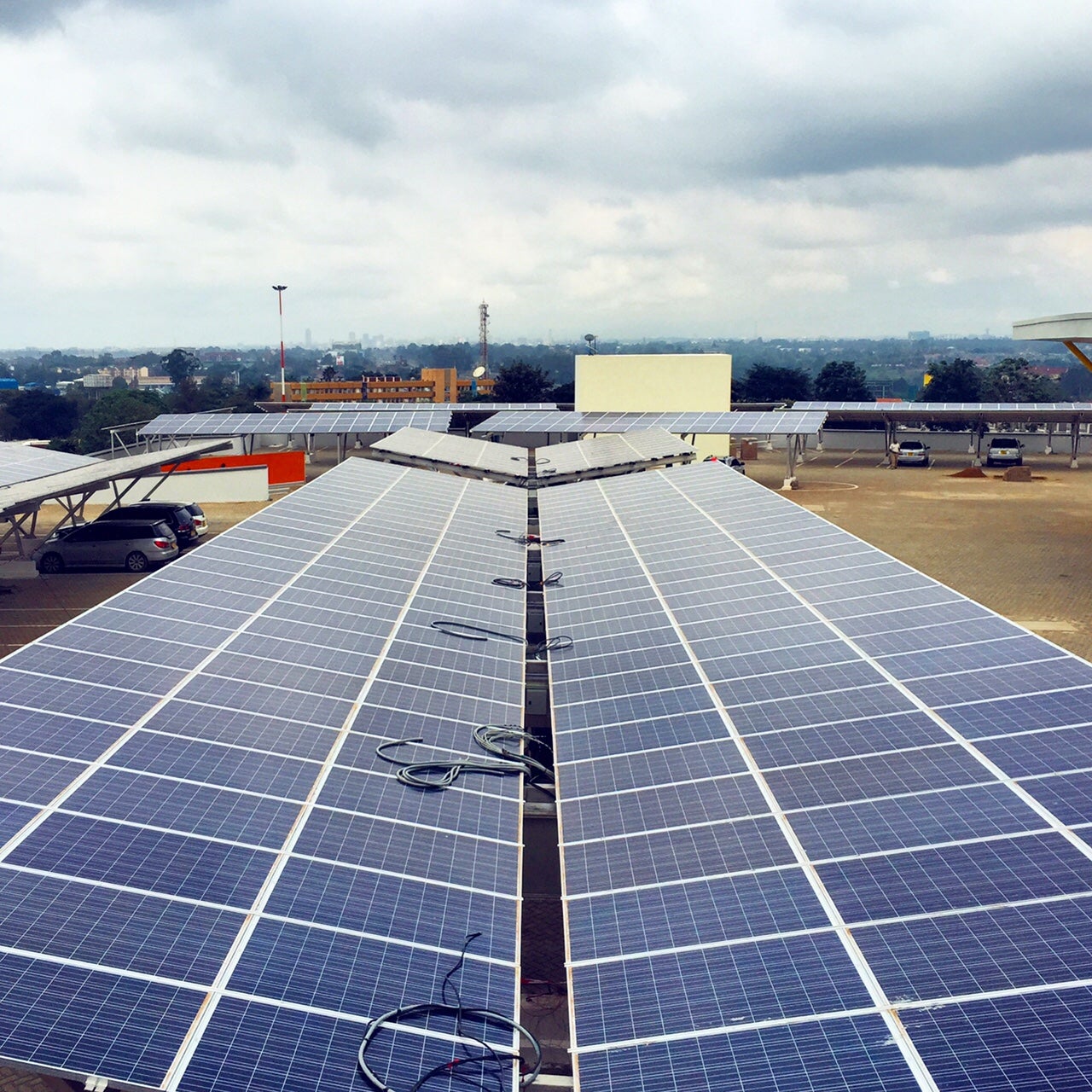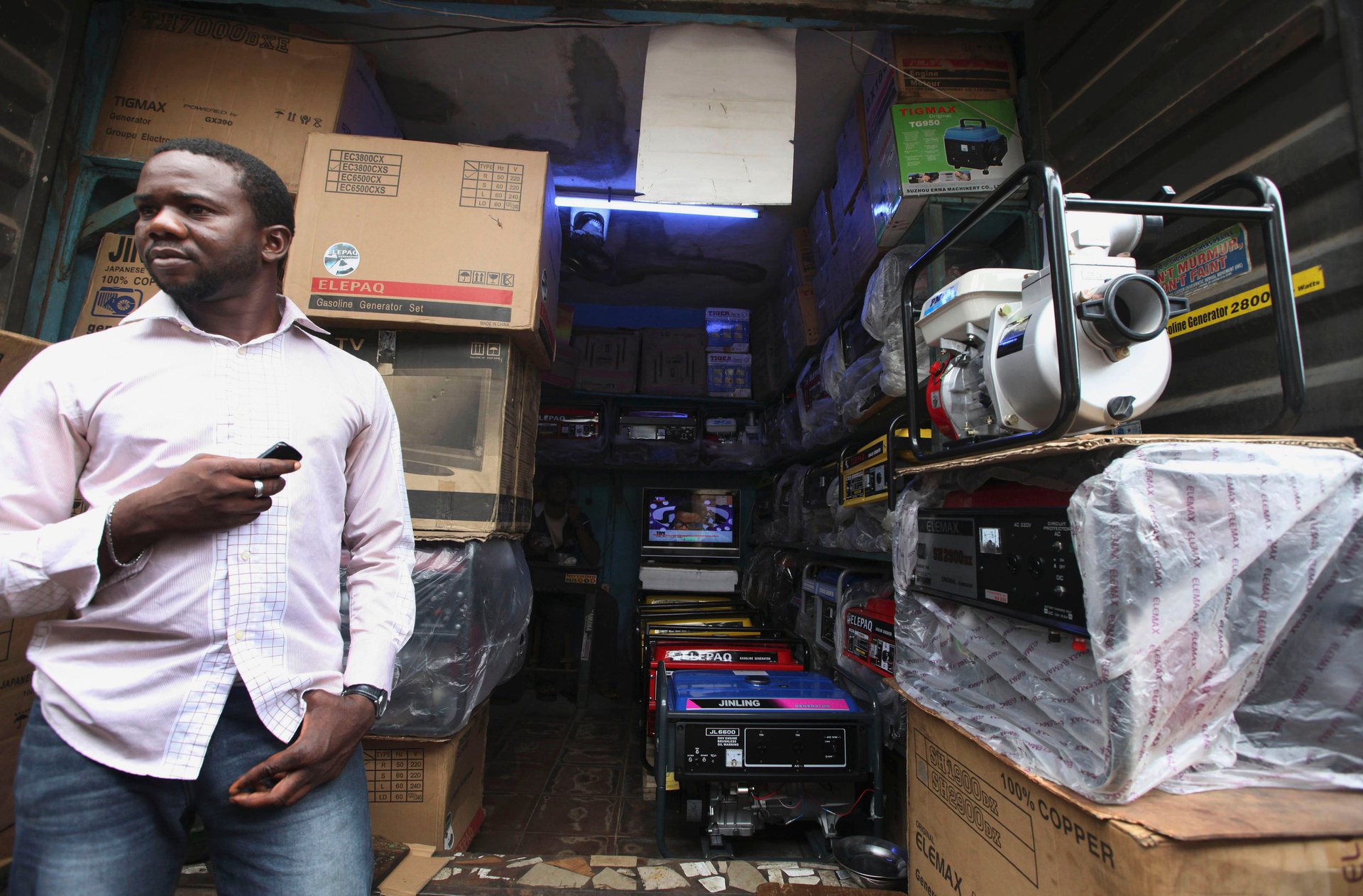Solar providers in Africa are on a collision course with struggling national grid companies
An enduring moment from former US president Barack Obama’s visit to Kenya in 2015 was a quick chat with the founders of home solar power provider, M-Kopa at the Power Africa Innovation Fair in the United Nations compound in Nairobi. Power Africa was Obama’s signature Africa initiative to help boost electrification across the continent and has had mixed impact depending on who you ask.


An enduring moment from former US president Barack Obama’s visit to Kenya in 2015 was a quick chat with the founders of home solar power provider, M-Kopa at the Power Africa Innovation Fair in the United Nations compound in Nairobi. Power Africa was Obama’s signature Africa initiative to help boost electrification across the continent and has had mixed impact depending on who you ask.
But M-Kopa, which was just four years old at the time, has grown rapidly in that time, reflecting the broader progress in the sector as renewable energy solutions are increasingly adopted as viable workarounds to plug the wide gaps in electrification in Kenya and across the continent. Yet, a half decade later, there are fears that looming regulation in the East African country is signaling a possible shift in the government’s outlook on the sector.
Those fears come in light of the latest annual report by Kenya Power, the national electricity company, which showed local demand growth for electricity lagged below the projected level of 5%. Even more crucial is the reason presented as a suspected cause of stunted demand. “Dampened demand growth is further compounded with the increased threats of grid defection by the industrial category as decentralized renewable energy options are becoming more available and cheaper,” the report stated.
Put another way, more industrial customers in Kenya are now being powered by renewable energy sources—a stark reality for Kenya Power given that industrial customers account for 45% of its total revenues.

In the wake of the utility’s report, Kenya’s Energy and Petroleum Regulatory Authority is proposing rules for further regulation of importing, distributing, installing, and maintaining solar systems in the country. And, given the proximity of both events, the proposals have already been described as a protectionist attempt to “thwart” the penetration of solar power and preserve Kenya Power’s dwindling revenues. For its part however, EPRA has denied the suggested ulterior motives.
But while the regulator might indeed be without ulterior motives, the current realities of Kenya Power, and the impact of solar energy providers, offers a snapshot of a looming face-off between nascent renewable energy providers and struggling national utilities across the continent.
Change-over
The obvious reason more industrial users of electricity are increasingly taking up the option of solar power is the cost implication. “On the cost curve, [solar] will get cheaper by 10%-15% every year, which is extraordinary and fundamentally disruptive to electricity,” says Matthew Tilleard, managing partner at CrossBoundary, a solar power provider for businesses which operates in nine African countries.
The switch by industrial players is not only happening in Kenya either. In Nigeria, off-grid energy firm Rensource is building a 700 kilowatt solar power plant for one of the country’s largest private farms. Further, middle-class home owners are also increasingly taking up the option of installing solar systems, as a complement to the national grid’s unstable electricity supply in some cases but as a complete replacement in others.
Companies like M-Kopa and others offering pay-as-you-go solar solutions are also improving access to renewable energy by eliminating large upfront costs of purchase and installation through flexible payment plans based on the ability of consumers to buy what they can afford, rather than wait on an uncertain bills from national utilities.
Increasingly, these services are being delivered by solar powered mini-grids which power dozens or a few hundred households. The rapid growth of these mini-grids has coincided with a reduction in costs—the average price per connection dropped to around $700 last year down from around $1,600 earlier in the decade, according to data from the Africa Minigrid Developers Association.
Capex outlay has more than halved in that time and the cost for new entrants has fallen by a third. The average installed costs is also said to have decreased by 65% to $6,200/kW in 2018 from $14,000/kW in 2015.
As such, taking up solar power over grid supply is a move not only driven by the notorious unreliability of national grids—coming under strain as many African countries’ populations have expanded quickly—but also by the simple fact national utilities cannot match the cost savings solar power providers promise, particularly over the long term. In fact, back in September, Nigeria was on the cusp of a nationwide strike after a nearly 100% increase in electricity tariffs. “It has become a no-brainer to clients to look at solar for power,” says Ademola Adesina, CEO of Rensource.
One way for large, inflexible utility companies to adapt to the changing trends is to seek opportunities for collaboration with private renewable energy providers, Adesina says. “It would be a better use of my time to deploy a 20 megawatt plant to power an entire community or industrial park [through national distribution companies] rather than doing smaller deals,” he tells Quartz Africa.
The potential cost savings solar energy providers promise will become even more crucial in the year ahead as the continent suffers a setback in electrification. Data from the International Energy Agency (IEA) show the number of people living without electricity in Africa is set to increase for the first time in eight years, and fall back to 2016 levels given the economic effects of the Covid-19 pandemic.
With IEA estimating that over 100 million people will be unable to afford basic electricity services across the continent due to dire economic straits, the appeal of cheaper, affordable solar power is likely to continue to rise.
Mind the gap
As governments across Africa contemplate the existential crisis their national electricity companies will face as the shift to solar continues, they will face some stark realities.
With nearly 600 million people without access to electricity, national grids are simply unable to generate and distribute enough power to match growing local demand. In South Africa, Africa’s most advanced economy, episodes of electricity blackouts—or “loadshedding,” as Eskom, the national power utility firm, calls it—have become increasingly normal. The pressures of catering to local demand has seen the job of chief executive at Eskom become a poisoned chalice of sorts over the years.
In Nigeria, the use of expensively maintained petrol or diesel-powered generators as a key source of electricity has long been a feature of everyday life, despite the high expense of fossil fuels and accompanying costs of air pollution.
Conservative estimates by Access to Energy Institute (A2EI), a German-based non-profit, suggest Nigeria is home to 23 million small gasoline generators which have a capacity that’s eight times larger than the national power grid.

With such vast shortcomings, solar power can be more accurately described as being fundamental to the progress of electrification rather than a threat to a wobbling status quo. Indeed, some African countries have taken that view and are investing billions of dollars in taking advantage.
In 2016, Morocco connected Ouarzazate Solar Power Station, with an installed capacity of 160 megawatts, to its national grid as part of a target to generate 52% of its electricity through renewable energy sources by 2030.’
More recently, Nigeria has toed a slightly different path to deploying solar power as part of its national electrification policy: the government has announced a project that will see up to 25 million Nigerians in underserved and off-grid communities supplied with solar home systems through payment plans that will remove the upfront costs of purchase and installation.
As it turns out, the upsides that come with adopting renewable energy sources go well beyond electrification. Last year, a “job census” report by Power for All, a non-governmental organization focused on promoting renewable energy, showed that startups and other players in the space are creating jobs at a scale that’s already comparable to local utilities in Kenya and Nigeria.
Given obvious benefits, a protectionist recourse to preserving fading utilities at the expense of renewable energy upstarts might slow down growth in the sector but will ultimately prove futile, Tilleard says.
“We could lose five or ten years worth of fixing electricity on the continent to bad regulation and special interests trying to hold on,” he tells Quartz Africa. “But the inevitability of current cost curves for this technology means we’ll end up in the same place—the question is if we’ll waste a lot of time getting there.”
Sign up to the Quartz Africa Weekly Brief here for news and analysis on African business, tech, and innovation in your inbox